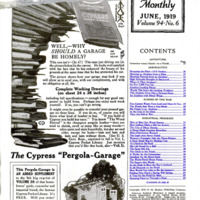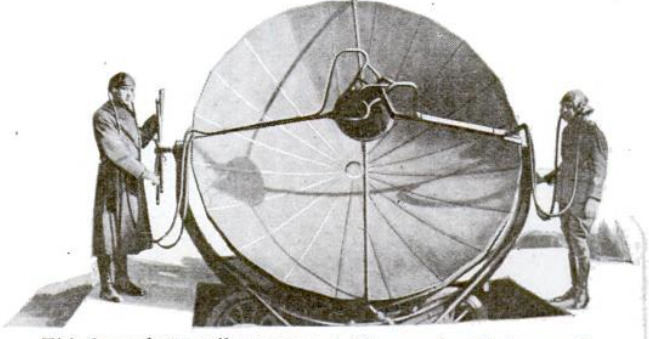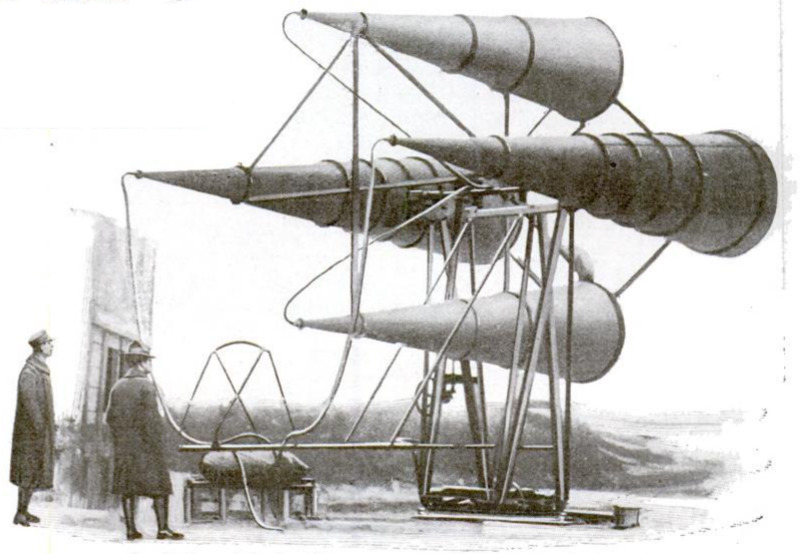Two sound-collecting instruments used by the Allies to locate airplanes during World War I
Item
-
Title (Dublin Core)
-
Two sound-collecting instruments used by the Allies to locate airplanes during World War I
-
Article Title and/or Image Caption (Dublin Core)
-
Where Is That Airplane?
-
extracted text (Extract Text)
-
AIRPLANES in flight make a noise that at close
range is almost deafening. The human ear, unaided,
can detect the noise of an airplane in flight at a consider-
able distance, but it is extremely difficult to locate the di-
rection from which the sound comes.
A number of different systems of sound-collecting in-
struments were used by the Allied armies for locating
airplanes, especially at night. Two of them are shown
below.
In one of them four large conical tubes are supported
by a tiltable framework resting on a turntable. The
wide-open ends of the horns are turned toward the enemy
to catch the faintest sound coming from that direction.
The sound waves, thus collected, are amplified at the nar-
row ends of the tubes by microphones, and are then car-
ried to the observer through listening-tubes.
The parabolic sound-collector shown in the other picture
consists of a light shell formed like the reflector of a loco-
motive headlight, supported by a framework resting on
wheels. The parabolic cup collects the sound waves and
reflects them to the microphone, which is placed in the
focus of the shell. The microphone amplifies the
sounds and, through a double tube, transmits them to
the observer.
The range of this apparatus is about three and one
half times that of the unaided ear.
-
Language (Dublin Core)
-
eng
-
Date Issued (Dublin Core)
-
1919-06
-
pages (Bibliographic Ontology)
-
50
-
Rights (Dublin Core)
-
Public domain (Google digitized)
-
Archived by (Dublin Core)
-
Davide Donà
-
Marco Bortolami (editor)
 Popular Science Monthly, v. 94, n. 6, 1919
Popular Science Monthly, v. 94, n. 6, 1919




